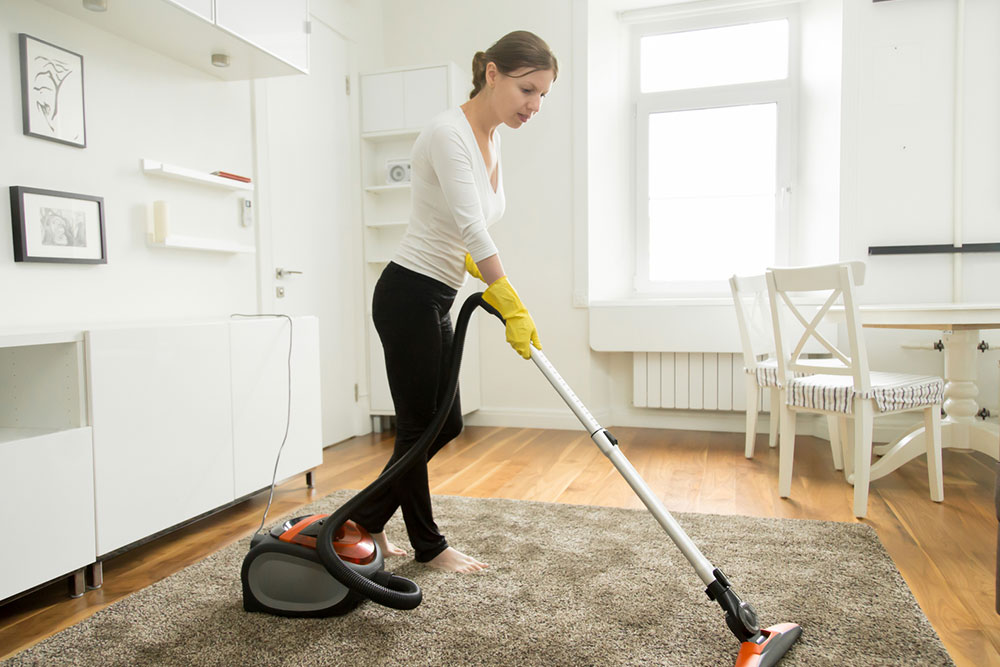6 common carpet cleaning mistakes to avoid

Carpets and rugs not only provide thermal insulation and warmth to a space, but they also elevate a room’s aesthetic appeal. They are among the most used home furnishings, especially in colder places, and when maintained well, they last longer and retain their texture. Since carpets are quite textured and heavy, one may find it difficult to clean them and end up making certain mistakes. These are mentioned below and should be avoided:
1. Scrubbing to remove stains
Carpet stains are icky and sticky and quite an eye-sore, especially if they are very visible. So naturally, people use quite a bit of elbow grease and a heavy-duty brush to scrub off fresh stains and get rid of them quickly. While this may work the first few times, this method stops being effective after a while and damages carpets.
Carpet fibers, like most kinds of fabric, cannot resist sustained, prolonged abrasions through scrubbing, squeezing, and aggressive rubbing. In fact, scrubbing stains is not even an effective tactic, as it just causes the stain and liquid to permeate further into the carpet fabric layer.
2. Using a low-quality vacuum cleaner
Vacuuming is an effective way to clean carpets, as it is one of the easiest ways to do the task. If done correctly, vacuuming can remove dust, dirt, and other allergenic contaminants from a carpet. The one requirement for getting vacuuming right is using a high-quality vacuum cleaner. Poor-quality, and sometimes cheap, vacuum cleaners cannot trap allergens and dust particles as effectively, and their working intensity tends to damage carpet fibers if used for long periods.
This is why it is wise to stay clear of low-quality vacuum cleaners when one plans to vacuum-clean their carpets.
3. Overusing carpet deodorizers
Spray or powder deodorizers are tools used to keep carpets fresh, clean, and smell-free. In that sense, these products are not really “cleaning,” as they are useful to remove some of the unpleasant elements of unclean carpets without removing dirt, stains, or dust particles.
Using deodorizers regularly can cause a buildup of dirt on carpets over time and make them dirtier. Even powerful vacuum cleaners do not have the strength to remove this buildup from carpets. Deodorizers are particularly bad options to keep carpets fine when made of polyester.
4. Not testing new cleaning solutions
Buying a cleaning product after watching a commercial or promotional advertisement promising to clean any stain effectively in minutes is natural. People directly use these solutions on their carpets and wait for the best results. Using new solutions on carpets without any prior testing is tricky, as one does not quite know how their carpets would react to the cleaning agents.
It is better for people to first try out a solution on a hidden area before doing so on the entire surface area of their carpets. If a cleaning solution does not bleach the carpet or damage its fibers, then it can be used for cleaning purposes in the long run.
5. Wetting the carpet before cleaning
Water is an effective cleaning agent for most kinds of fabric carpets. However, there is a limit to how wet one can make their carpets before removing the stains, dust, and dirt particles from their surface. Oversaturating a carpet with water simply makes its underfelt zones wet, damp, and squishy. Over time, mold growth and rotting occur on the carpet surfaces. Mold, especially black fungus, is quite harmful and can cause allergic reactions and illnesses in people.
Overwetting a carpet can also cause discoloration and fabric damage. Therefore, using a limited amount of water for cleaning is the way to go.
6. Not cleaning carpets based on their type
Carpets come in various types, with two main broad categories: ones made from natural and synthetic fibers. Both types of carpets require different kinds of cleaning agents and products to remove all the stains, dirt, and filth from their respective surfaces and underbelly zones. Before purchasing a specific type of carpet, people must research the cleaning agents that work best on the fabric of that carpet.



